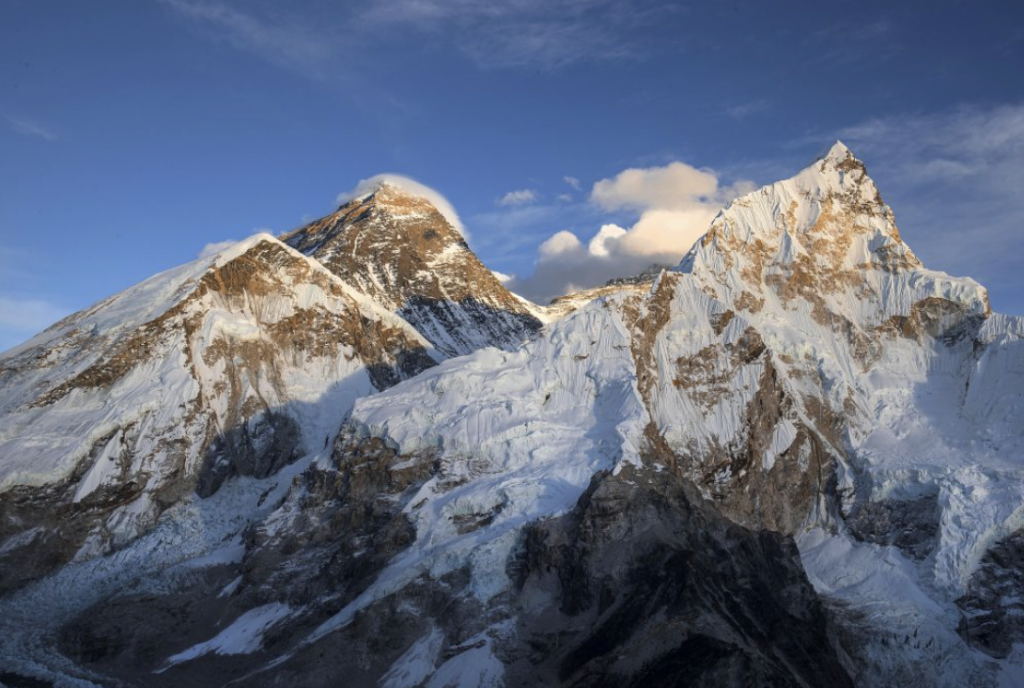KATHMANDU, Dec 29: In 2023, the mountaineering community celebrated the 70th anniversary of climbing Mount Everest, with about 500 climbers—including four Indians—making it to the summit. Despite worries about rising temperatures, melting glaciers and snow, and an increase in extreme weather events, they continued to climb. Since Edmund Hillary of New Zealand and Tenzing Norgay of Nepal, also known as Sagarmatha in Nepali, reached the summit of 8,848.86 metres (29,032 feet) on May 29, 1953, thousands of climbers from all over the world—including India and Nepal—have been drawn to the world’s highest peak. While many of them died trying to reach the summit, thousands of climbers have succeeded.According to official data, over 300 climbers have died and about 7,000 people have successfully reached the summit of Mount Everest since the Hillary-Norgay ascent in 1953. 2023 was not any different. In the spring of 2023, 478 climbers—103 of whom were women—ascended to the summit of Everest during the one and only window of opportunity to reach the incredibly high altitudes. This year, four Indian nationals reached the summit of Everest, and one passed away in the high alpine regions. On May 17, Yashi Jain, Mithil Raju, Sunil Kumar, and Pinkhi Haris Chhed accomplished the feat of climbing the world’s highest peak. On May 18, Indian mountaineer Suzanne Leopoldina Jesus, who had a pacemaker, passed away while attempting to reach the summit close to Everest Base Camp. According to officials, eight climbers went missing and four Nepalese, one Indian, and one Chinese climber died during their individual Everest expeditions. Kami Rita Sherpa, 53, of Nepal achieved two summits this season on May 17 and May 23, setting a new world record for the most ascents of Mount Everest. Sherpa Pasang Dawa, 46, a fellow countryman, matched Kami Rita’s record until 2022 when he reached the highest peak on May 14 and May 17, respectively, marking his 26th and 27th visits to the summit this year. Not only the Sherpa community, though, has kept pushing the boundaries of human endurance and setting records in the thin air of Nepal’s high-altitude Himalayas.On May 19, Hari Budhamagar, a 43-year-old double amputee and former British Gurkha soldier, made history by becoming the first person in his category to summit the highest peak in the world using prosthetic legs. On May 19, a 39-year-old Singaporean climber of Indian descent named Shrinivas Sainis Dattatraya vanished while making his way back from the top of Mount Everest. The Sherpa people who live in the foothills of the snow-capped mountains are essential to any expedition in the high-altitude Himalayas. They are also the most at risk on the perilous hikes to the highest mountainous region on Earth because of this.Themwa Tenzing Sherpa, Lakpa Rita Sherpa, and Badure Sherpa, three Nepalese Sherpa guides, vanished on April 12 when a massive ice sheet that fell from the mountain, more than 50 metres high, buried them under five to six metres of snow on the most treacherous part of Mount Everest during an avalanche. This was the first accident of the season at the highest peak in the world. This spring, Nepal issued a record 466 climbing permits to climbers from 65 different countries, including 40 from India, for Mount Everest. This surpassed the previous record of 409 set in 2021. 323 was the number in 2022.For the small Himalayan nation of Nepal, which has a sizable mountain population reliant on mountaineering and associated tourism in the area, mountaineering is a lucrative source of income. For this reason, the vast majority of people whose livelihoods are at risk due to climate change are concerned about the melting glaciers, increasing temperatures, and growing frequency of extreme rainfall events. According to the International Centre for Integrated Mountain Development (ICIMOD), in just 60 years, the thickness of 79 of the glaciers surrounding Everest has decreased by more than 100 metres, and since 2009, the rate of thinning has almost doubled.As part of the #SaveOurSnow campaign, which coincided with the 70th anniversary of the summit of Mount Everest, ICIMOD, backed by mountain institutes around the world, including the Nepal Mountaineering Association, urged governments to honour their pledges to keep global warming to 1.5 degrees.



